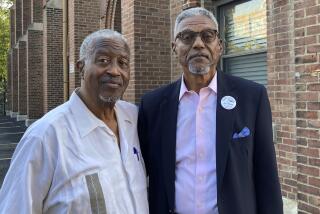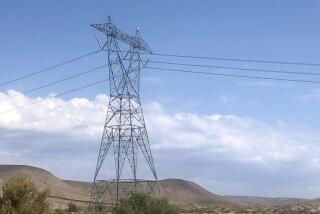Dispute Surfaces Over Rocketdyne Deaths Study by UCLA Team : Health: Panel questions research as investigators say they will soon know how many died from radiation.
Nearly two years into an exhaustive health study of Rocketdyne’s Santa Susana Field Laboratory, UCLA investigators said Monday they are almost ready to calculate how many workers there died from workplace exposure to radiation.
But some members of a special panel watchdogging the study criticized the team’s methods and demanded it turn over all data before issuing the final report.
Death data could be skewed by the fact that Rocketdyne historically has hired workers who are healthier than the American norm, said Dan Hirsch, chairman of the advisory panel.
“Speaking for the members of the community, we are furious” that the Rocketdyne deaths would be compared to the U.S. death rate, Hirsch said. “It’s going to be misleading beyond measure.”
Hirsch tried to persuade fellow panelists to order the UCLA researchers to give their data to the panel for independent review and criticism before publishing a final report. But the measure failed on a 4-5 vote.
The panel of local residents and industry experts was appointed to monitor the study to make sure it was done properly.
UCLA team leader Hal Morgenstern assured panelists that his investigators will factor the so-called “healthy-worker effect” into their calculations for the study.
The Rocketdyne study was commissioned in 1991, the year that scientists reported finding abnormally high levels of bladder cancer among people living near the lab, which is perched in the Santa Susana Mountains between Simi Valley and Chatsworth.
After reading that report, Assemblyman Richard Katz (D-Sylmar), and then-Assembly members Terry B. Friedman (D-Brentwood) and Cathie Wright (R-Simi Valley) pressured the U.S. Department of Energy to study cancer deaths among Rocketdyne workers.
The Energy Department hired epidemiologists to learn whether Rocketdyne employees had died from exposure to the radioactive materials and chemicals they worked with while developing rocket engines and nuclear power sources at the field lab.
Armed with a $500,000 grant, the UCLA team formed in 1993 to dig through ancient personnel files, plumb national databases and pester the government for death certificates on Rocketdyne employees who had worked with radiation since the 1950s.
The team chose a group of 5,069 current and former employees who had worked at Rocketdyne between the 1950s and 1993 and were part of a radiation-monitoring program.
Most of these worked for a government contractor called Atomics International--later absorbed by Rocketdyne--which researched nuclear power plants and atomic rocket engines.
Of those workers, the team reported Monday, 914 had died by January, 1994, of a variety of causes, including 235 from different forms of cancer--the leading cause of death from radiation exposure.
The UCLA team should be able to say with good probability how many of those cancer deaths were caused by radiation at Rocketdyne, Morgenstern said.
But the study of chemically related deaths could be shortchanged, Morgenstern warned.
Though Rocketdyne kept records on how much radiation its workers were absorbing, company officials say they have since lost their monitoring records on workplace levels of carcinogenic chemicals such as hydrazine and trichloroethylene.
UCLA investigator Dr. Beata Ritz said, “We have no way of knowing what exposures would have been on specific projects.”
Researchers are trying to cobble together estimates on whether workers went anywhere near the toxins, by cross-referencing company records on where they worked and chemicals used nearby, she said.
But it would take two more years of research to duplicate the lost Rocketdyne monitoring records, Ritz said, and she has already had to lay off some research helpers because money for the study is running out.
A $126,000 extension to the federal research grant is locked up somewhere in the Department of Energy, said Larry Bilick, a spokesman for the California Public Health Foundation, which is administering the study. His staff is trying to get the money unstuck, he said.
Meanwhile, Ritz said, she has already had to lay off six part-time research assistants.
Without the extra money, she warned, “I’ll have to lay the rest of my employees off next month, and maybe lay myself off the month after.”





